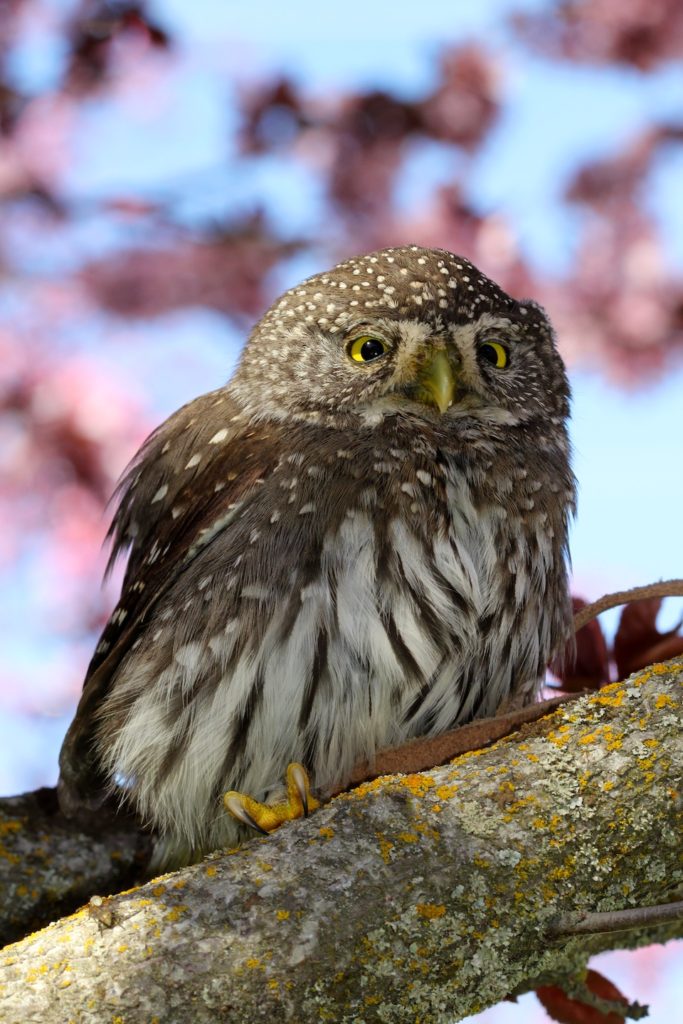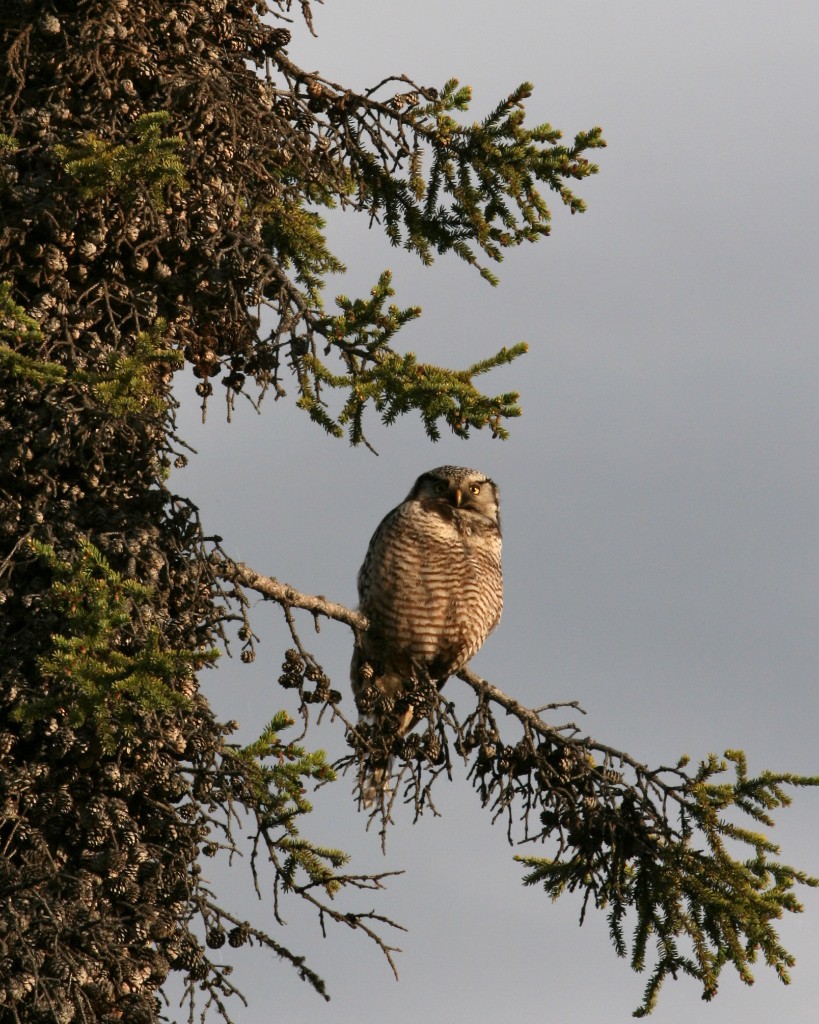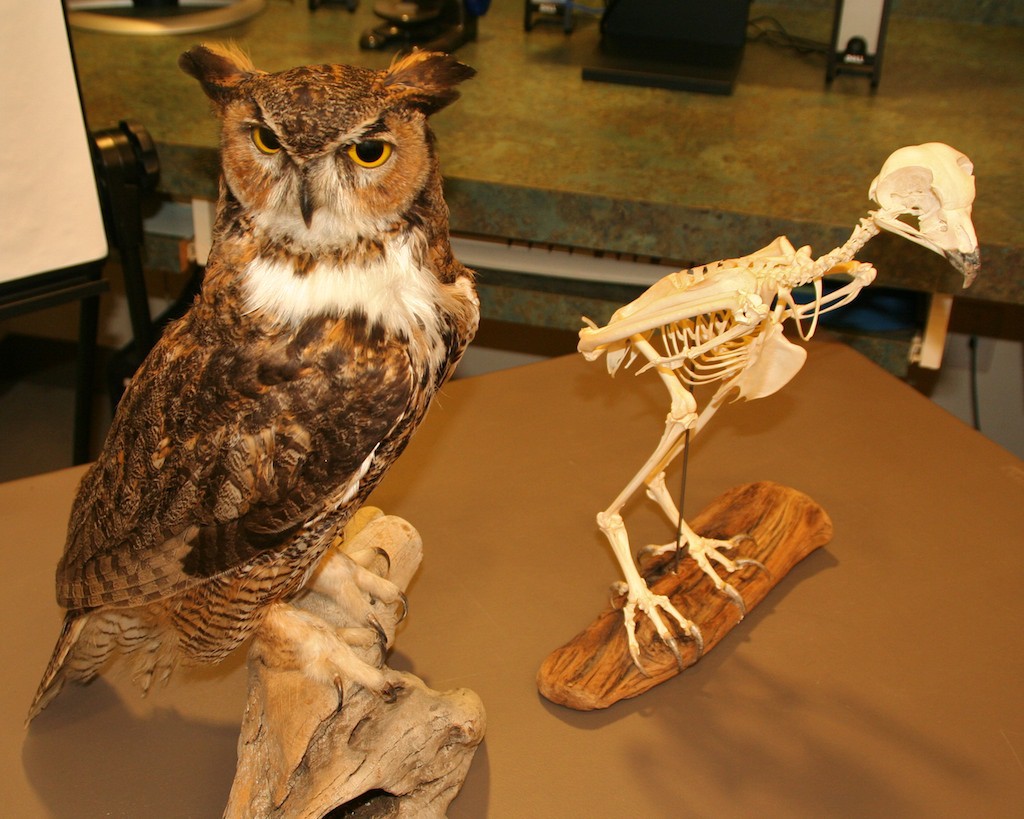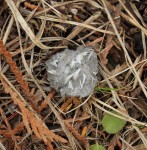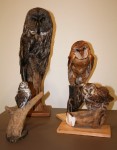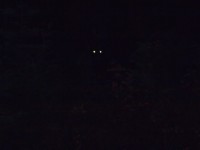Out of the corner of my eye I noticed a big bump on a spruce limb three-quarters up a tree that seemed out of place. I stopped biking and realized the bump was an owl roosting on the limb. As I slowly walked closer, I realized the owl was a northern hawk owl because of its hawk-like resemblance.
Owls rely on their drab appearance to blend in to their surroundings, especially when roosting. An owl’s drab gray, brown and buff coloration along with streaks and striations help camouflage it with tree trunks and the dappled shade of underbrush.
Most owls need this camouflage because they roost during the day and are active at night. However, owls can be active during the day too–these owls are considered diurnal, such as the northern pygmy-owl. Owls only active at night, such as barred owls, are considered nocturnal. Owls that are active in the early morning and/or late evening hours, such as great horned owls, are considered crepuscular.
The time of day when an owl is active depends on when its prey is the most active. Owls prey on small mammals, small birds (including smaller owls), amphibians, reptiles and invertebrates. The great horned owl is the only predator that preys on skunks regularly and they also catch fish in shallow water.
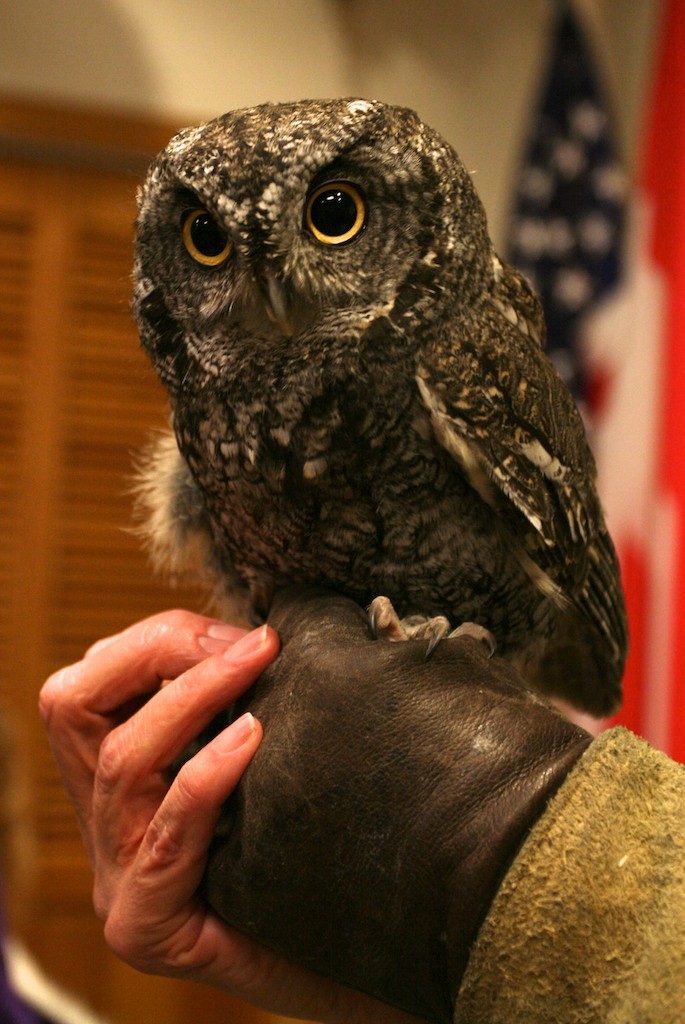
Some rodents are most active under the cover of darkness but owls are equipped to outsmart them. An owl’s night vision is thought to be the best in the animal kingdom. Their large eyes allow them to collect more light–so much that they can see objects in one-tenth to one one-hundredth the amount of light we would need to see the same object. Their eyes are so large that they cannot even move in the sockets. To compensate for this owls can swivel their head within a 270 degree range.
Diurnal owls rely mostly on their eyesight to find prey but nocturnal owls rely mostly on their hearing. Great gray owls can detect a vole 60 feet away under 18 inches of snow by hearing alone. Owls are believed to have the most accurate hearing in the animal kingdom. The ear tufts on owls have nothing to do with hearing, they help communicate mood and help break up the outline of the owl’s head for camouflage purposes.
The characteristic facial disc is one of the reasons owls can hear extremely well. The facial disc acts like a satellite dish and guides sounds towards the ear openings on the outer rim of the disc. On some owls these ear openings are not symmetrical like on humans but asymmetrical with the right ear opening higher than the left ear opening. This allows the owl to better pinpoint a sound by rotating its head until the sound reaches both ear openings at the same time.
Another reason owls are stealthy predators is their capability of silent flight. Some birds, like ravens, can be heard above the tree tops, but not owls. Their flight feathers have tiny serrations on the leading edge that muffles the sound of air flowing over the wing.
Once an owl silently stalks and then captures its prey with its sharp talons, the owl will fly to a perch and swallow its meal–often whole. The non-digestible parts (fur, feathers, bones) are regurgitated six to twelve hours later in the form of a compact, oval owl pellet. Finding multiple owl pellets under a tree may be evidence of an owl’s favorite perch and may reveal a well-camouflaged owl roosting next to the tree trunk.
